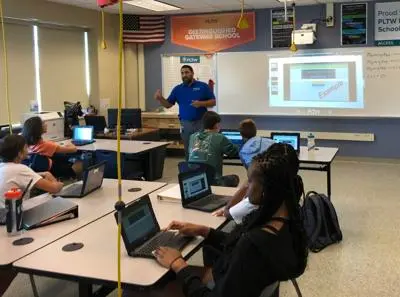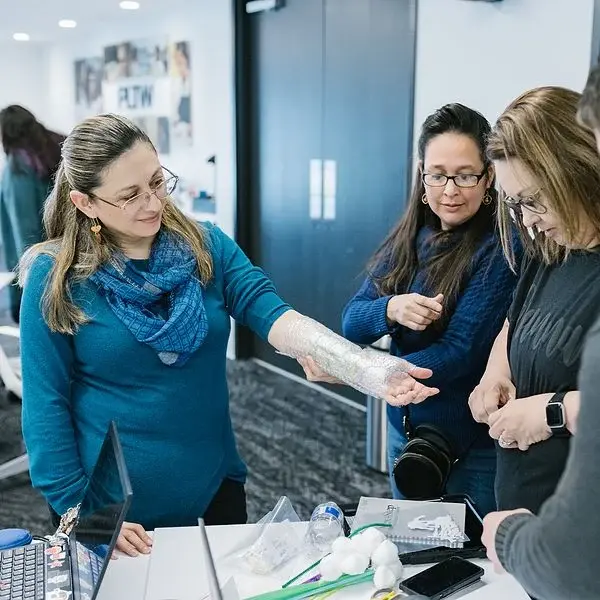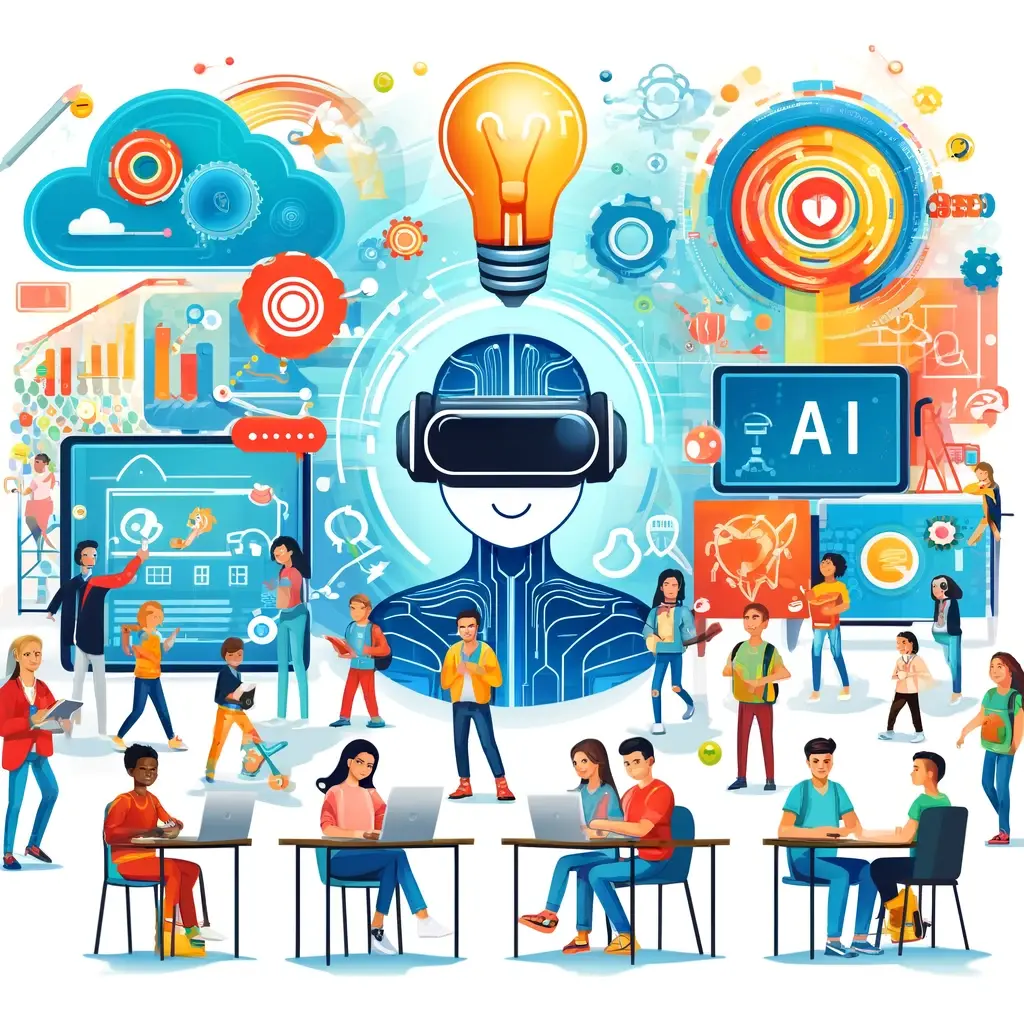
In today’s rapidly evolving technological landscape, Industrial Technology and PLTW Teacher plays a pivotal role in preparing students for successful careers. This article looks at how Project Lead The Way (PLTW) is used in industrial technology education, focusing on effective teaching methods, key skills, and upcoming trends for teachers and students in 2024.
Understanding Industrial Technology
What is Industrial Technology?
Industrial technology encompasses a wide range of fields focused on the application of engineering principles and manufacturing processes. It uses machines, tools, and systems to make products and run operations smoothly. The discipline plays a crucial role in various sectors, including manufacturing, construction, and automation.
The Importance of Industrial Technology Education
As industries increasingly rely on technology to optimize processes, the demand for skilled workers in industrial technology continues to rise. Educators must equip students with the knowledge and skills necessary to navigate this evolving landscape, making industrial technology education essential for workforce development.
Project Lead The Way (PLTW): A Framework for Success
What is PLTW?
Project Lead The Way is a nonprofit that offers meaningful learning experiences for K-12 students and teachers. Established in 1997, PLTW focuses on preparing students for success in science, technology, engineering, and mathematics (STEM) fields through hands-on, project-based learning.
Core Principles of PLTW
- Hands-On Learning: PLTW emphasizes practical, real-world projects that engage students and foster critical thinking.
- Collaboration: Students work in teams, mirroring industry practices and developing essential interpersonal skills.
- Industry Relevance: The PLTW curriculum is developed with help from teachers and industry experts to keep it relevant and modern.
PLTW Programs Related to Industrial Technology
PLTW offers several programs relevant to industrial technology, including:
- Engineering: Focuses on design and engineering principles.
- Computer Science: Enhances students’ understanding of programming and software development.
- Biomedical Science: Integrates technology with health-related applications.
Curriculum Development in Industrial Technology

Key Components of a Successful Curriculum
To create an effective industrial technology curriculum, educators must focus on several key components:
- Alignment with Industry Standards: The curriculum should reflect current industry practices and standards, ensuring students acquire relevant skills.
- Integration of STEM Education: Emphasizing STEM principles enhances students’ problem-solving and analytical skills, essential for industrial careers.
Strategies for Incorporating Hands-On Learning
Hands-on learning is essential for keeping students engaged in industrial technology. Educators can implement:
- Laboratory Experiments: Provide students with practical experience using tools and technologies.
- Simulation Software: Utilize software that allows students to design and test prototypes virtually.
Assessment Methods for Student Learning
Effective assessment methods should include:
- Project-Based Assessments: Evaluate students’ understanding through practical projects.
- Peer Evaluations: Foster collaboration and critical feedback among students.
For more interesting blogs, visit our site: https://futuretrendz.co.uk/
Essential Skills for Industrial Technology Students
Technical Skills
Students in industrial technology must develop several key technical skills, including:
- Computer-Aided Design (CAD): Proficiency in CAD software is crucial for designing and modeling products.
- Robotics and Automation: Learning about robotics improves students’ skills in today’s manufacturing.
Soft Skills
In addition to technical abilities, students must cultivate essential soft skills:
- Problem-Solving and Critical Thinking: The ability to analyze complex situations and devise solutions is paramount.
- Teamwork and Collaboration: Effective communication and collaboration are essential in any industrial setting.
Effective Teaching Strategies for PLTW and Industrial Technology
Project-Based Learning
Project-based learning (PBL) is at the core of PLTW’s approach. Key benefits of PBL include:
- Real-World Application: Students engage in projects that mimic real-world challenges.
- Enhanced Engagement: Hands-on projects foster student interest and motivation.
Example Projects
Some successful projects in industrial technology include:
- Building a Sustainable Energy Model: Students design and construct a model that utilizes renewable energy sources.
- Creating an Automated Assembly Line: Teams develop a simulated assembly line, applying principles of robotics and automation.
Use of Technology in the Classroom
Incorporating technology into the classroom enhances learning experiences. Educators can utilize:
- Software Tools: Applications like Autodesk and SolidWorks facilitate design and engineering tasks.
- Virtual and Augmented Reality: Immersive technologies help students see and understand complex systems.
Differentiated Instruction Methods
To meet different learning styles, teachers should use varied teaching methods.Strategies include:
- Flexible Grouping: Changing group setups to match students’ skills and interests.
- Tiered Assignments: Providing different levels of assignments to challenge students appropriately.
Engagement and Motivation Techniques
Creating an Inclusive Classroom Environment
To foster an inclusive environment, educators should:
- Encourage Diverse Perspectives: Embrace students’ varied backgrounds and ideas.
- Provide Supportive Resources: Offer additional help and resources to struggling students.
Industry Partnerships and Real-World Applications
Collaborating with local businesses and industries enhances learning. Educators can:
- Organize Field Trips: Visits to manufacturing plants or technology firms provide students with real-world insights.
- Guest Speakers: Inviting industry professionals to share their experiences can inspire students.
Use of Competitions and Challenges
Competitions can be a powerful tool for engagement. Educators can:
- Participate in Robotics Competitions: Motivate teams to create and build robots for competitions.
- Host Design Challenges: Allow students to tackle real-world problems and present their solutions.
Professional Development for PLTW Teachers

Importance of Ongoing Training
Ongoing training is important for teachers to keep up with industry trends and teaching practices.
Resources for Teacher Education
Teachers can use various resources, including:
- Online Courses: Platforms like Coursera and edX offer courses in educational technology and pedagogy.
- Workshops and Conferences: Attending workshops can enhance teaching skills and networking opportunities.
Networking Opportunities within the PLTW Community
Joining PLTW networks allows teachers to share experiences and strategies, fostering a collaborative learning environment.
Case Studies and Success Stories
Successful PLTW Industrial Technology Programs
Several schools have implemented PLTW programs with remarkable outcomes:
- Example High School: This institution integrated a PLTW engineering curriculum, resulting in increased student interest in STEM careers.
- Community College Partnership: A collaboration with a local community college provided students with dual enrollment opportunities in industrial technology courses.
Impact on Students’ Career Paths
Students participating in PLTW programs have reported increased confidence and interest in pursuing careers in engineering and technology.
Challenges and Solutions in Teaching Industrial Technology
Common Obstacles Faced by Teachers
Educators in industrial technology often encounter challenges such as:
- Limited Resources: Budget constraints may hinder the acquisition of necessary tools and technology.
- Keeping Up with Industry Changes: Rapid advancements in technology can make curricula outdated quickly.
Effective Strategies for Overcoming Challenges
To address these challenges, educators can:
- Seek Grants and Funding: Apply for educational grants to secure funding for resources.
- Engage with Industry Experts: Collaborate with local industries to stay informed about current trends and technologies.
For more interesting blogs, visit our site: https://futuretrendz.co.uk/
Future Trends in Industrial Technology Education

Emerging Technologies and Their Implications
As we move further into 2024, emerging technologies like artificial intelligence and the Internet of Things (IoT) will significantly impact industrial technology education. Educators must adapt curricula to incorporate these innovations.
Predictions for the Evolution of Industrial Technology in Education
The future of industrial technology education will likely see:
- Increased Use of Online Learning: Remote learning tools will continue to evolve, allowing for greater accessibility.
- Focus on Sustainability: Educators will emphasize sustainable practices within industrial technology curricula.
FAQs
- What is the role of PLTW in industrial technology education?
PLTW provides hands-on, project-based learning experiences that align with industry standards, preparing students for careers in STEM fields. - What skills do students develop through industrial technology programs?
Students learn technical skills like CAD and robotics, and also soft skills like teamwork and problem-solving. - How can teachers stay current with industry trends?
Teachers can engage in ongoing professional development, attend workshops, and collaborate with industry professionals. - What are some effective teaching strategies in industrial technology?
Effective strategies include project-based learning, differentiated instruction, and the use of technology in the classroom. - What future trends should educators watch for in industrial technology education?
Emerging technologies, a focus on sustainability, and increased online learning will shape the future of industrial technology education.
Conclusion
Industrial technology education, particularly through frameworks like PLTW, is essential for preparing the next generation of innovators. By fostering technical skills, soft skills, and real-world applications, educators can create impactful learning experiences that resonate with students. As we look to the future, staying ahead of technological advancements and industry trends will be vital in shaping effective educational practices.
Learn more about emerging trends at Future Trendz.







